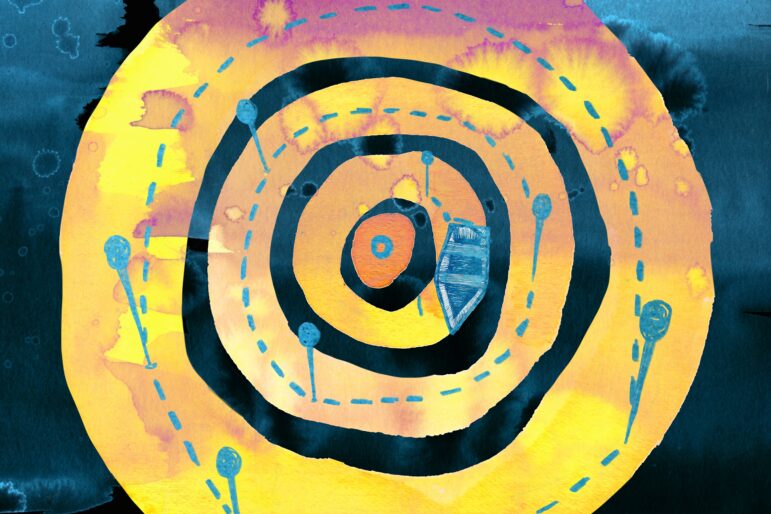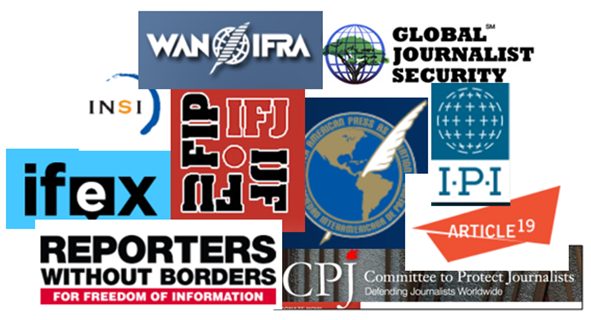
Introduction to Investigative Journalism
What is investigative reporting? Journalists and scholars have talked about definitions for decades, expanding it from finding a single instance of corrupt practices by a government or business official to revealing the systemic flaws that allow these practices (or dangerous incompetence) to flourish.Investigations have underlying principles, elements, and rigorous requirements for evidence, accuracy, and fairness. They also require strong and detailed planning.The first definition approved by an association of investigative journalists was created by
Chapters
Introduction to Investigative Journalism
What is investigative reporting? Journalists and scholars have talked about definitions for decades, expanding it from finding a single instance of corrupt practices by a government or business official to revealing the systemic flaws that allow these practices (or dangerous incompetence) to flourish.
Investigations have underlying principles, elements, and rigorous requirements for evidence, accuracy, and fairness. They also require strong and detailed planning.
The first definition approved by an association of investigative journalists was created by Investigative Reporters and Editors (IRE) in the United States, which began in 1975. The definition reads: “the reporting, through one’s own initiative and work product, of matters important to readers, viewers, or listeners. In many cases, the subjects of the reporting wish the matters under scrutiny to remain undisclosed.”
Over the years, journalists have added phrases and ideas to the definition such as watchdog reporting and accountability journalism. They have even noted that investigations have frequently included solutions (which the new brand of “solutions journalism” focuses on), and that investigative journalism has been at the forefront of data-driven stories. Generally, all these types of investigations rest on measuring performance (by people or institutions) against standards such as laws, regulations, or social norms.
The publication of a set of leaked documents alone, without doing any reporting and going through additional sources, is not considered an investigation. However, leaks can be the beginning of an investigation that is followed by additional multiple sources including public records such as court records, property records, company records, sanctions lists, and interviews with knowledgeable individuals and experts on the topic.
It also has become clear over time that investigative journalism is not only major projects that take months, if not years, to complete. An investigative story can be a “quick hit.” On occasions, an effective investigation can take a few days of work because that is all that is necessary. It can be a rolling investigation or a serial investigation, that is, a series of stories that build over time. It can be a breaking news investigation (IRE has an award for that now) such as finding the causes of a building or bridge collapse within a few days. Or it can be a “short investigation” that requires only a few weeks.
Furthermore, there have been stunning advances in collaborative investigative journalism where teams of reporters from different news organizations or journalists who are part of a consortium engage in cross-border or global investigations that uncover networks of corporate and organized crime.
Topics that are investigated vary, but they have included money laundering, corporate crime, organized crime, and corruption. They also included human rights abuses, environmental and climate change, and healthcare, among others.
However, each of these kinds of investigations have underlying principles, elements, and rigorous requirements for evidence, accuracy, and fairness. They also require strong and detailed planning, methodology, and proven reporting habits. One of those “habits” is having what acclaimed and long-time investigative reporter James Steele first called “a documents state of mind,” meaning an assumption that there are always documents (and now also data) to back up or refute an assertion by a government official or business leader.
Over time, the steps in carrying out an investigation have become formalized. While there are many variations in the presentations of these steps, which were first outlined in detail in the 1970s, they generally break down into these parts:
- Conceiving the idea of the story. This can come from a tip from a source, reading a document or another story or data analysis. This involves having a hypothesis — for example, lack of proper regulation is responsible for shoddy building construction – or a major question you want to answer often contained in what is known as “a story pitch.” A story pitch is not simply saying you have a good idea, but producing a memo that addresses what the key point of an investigation is, what documents and human sources are needed for the story, and what officials or institutions will be held accountable. Also, journalists need to consider what would constitute a “minimum story,” meaning a story worth publishing or airing even if it does not prove out the initial hypothesis or complete the investigation. The “maximum story” would be evidence not only supporting the hypothesis but also finding greater abuses or errors in a system than suspected.
- Deciding on the feasibility of the story. This means deciding if you have the resources, contacts, expertise, and time to do the investigations. In addition, it can mean doing a risk assessment that recognizes the physical or legal threats to journalists that can emerge during the reporting or after the story is published or aired. The feasibility assessment may result in modifying the suggested story.
- Researching to build a base of evidence that includes the three pillars of reporting: documents, interviews, and observation.
- Detailed planning on the sequence of reporting, and doing a schedule. This can be done in a “story board” that serves as the roadmap for the investigation.
- Continuing the reporting and keeping the information well-organized.
- Routine review through weekly memos or other methods of what you are finding and evaluating whether you should adjust your focus.
- Writing and producing a first draft to identify gaps in the reporting.
- Re-writing with close editing and doing “a line by line” verification of the story, making sure every line and part of the story is solidly sourced, preferably by multiple independent and cross-references sources.
- The actual publishing and production of the story or stories with a plan to handle feedback and tips that can lead to more stories.
Staying Organized
As noted above, while researching and reporting it is important to keep track of the findings and to organize the information that is being gathered both through data and documents, as well as through human sources. The information can be organized in various ways: spreadsheets, timelines, as well as through notes and footnotes in documents. This helps later during the fact-checking process, and allows to know which findings have been documented and confirmed, as well as which leads might need more reporting.
Here is an example of a table format that could be used for this purpose:
10
25
50
100 entries per page
Search:
LeadFindingSourceLink to sourceReference date (date of interview or document)Next stepsNotesExample Data | Example Data | Example Data | Example Data | Example Data | Example Data | Example Data
Example Data | Example Data | Example Data | Example Data | Example Data | Example Data | Example Data
Example Data | Example Data | Example Data | Example Data | Example Data | Example Data | Example Data
Showing 1 to 3 of 3 entries
‹1›
To follow documents and people trails, we should keep in mind:
- Preliminary research on journalistic stories that have been published about the topic that is being investigated, can suggest potential human sources and documents that could be explored.
- People can lead to other people as well as to documents. (This is known as following a people trail.) Remember to ask human sources if there are any other people who might know about the topic that they would recommend you talk to. If the source is referring to information that could be available on paper or in a file, it can also help to ask if they have any supporting documents that confirm or add to what they are saying, or whether they know if it would be possible to access files that support a specific claim or could be of interest for the reporting.
- Documents and public data can lead to other documents (this is known as a paper trail) as well as to people. Academic papers, press releases, public databases and records can mention people who could know about the topic that is being investigated and could become potential sources. They could also cite other documents that could be valuable. Remember to check the footnotes as they can mention these additional people and documents that could be of interest!
- Decide on and carry out freedom of information requests as far in advance as possible. Requests often face delays that could prevent getting documents with valuable information in time for the story.
Open source research methods, such as the use of social media or satellite imagery, have increasingly been used as part of the reporting process for journalistic investigations. In 2023, the Financial Times analyzed images of “2,312 mosques once featuring Islamic architecture” and found that “three-quarters have been modified or destroyed since 2018 across China.” Satellite imagery has also been used to document war crimes.
Know when you have enough information to stop reporting and produce the story.
When a journalistic investigation has a heavy data component, it is crucial to know the source of the data, to understand if the information gathered is a portion of a dataset or if it is a full dataset, and to understand the data structure and codes for information, and to assess how accurate the data are by finding errors. Also, allocate time for understanding, analyzing the data and conducting additional reporting during and after the data analysis stage. This way the data’s accuracy can be tested against human interviews and observations in the field.
Make sure to keep up to date on schedules for reporting, editing, and fact-checking. Make sure to keep track of what new sources should be pursued. Plans should be made early for potential ways of presenting a story, including the incorporation of visual and interactive elements.
Doing the Story
As outlined above, it is key to also keep the editorial processes in mind at different stages of an investigation. At the beginning, it is important to assess what is new, whether a topic is of public interest, and how difficult it is to access sources and resources needed for the investigation. During the research and reporting, the process involves keeping notes and assessing what findings are supported by which sources, and how they connect with the story.
During the 2023 Global Investigative Journalism Conference, a panel of editors — Ron Nixon, Associated Press; Alejandra Xanic, Quinto Elemento Lab; Vinod Jose, The Caravan; Drew Sullivan, OCCRP — highlighted the following tips for editors working on investigative stories:
- Identify the Story
- Chart a Good Investigative Plan
- Keep the Story Focused
- Get Organized
- Create Living Documents
- Line Edits
- Know When to Say Stop
- Protect Your Reporters
As part of the planning and carrying out of a story, it is important to do risk assessments and consider the type of threats and security protocols. Such protocols include: how is the information going to be stored? How is a reporter going to communicate with a source? How is the information going to be shared with other reporters or editors? Is it necessary to use encryption? What are the legal risks?
A critical part of the investigative process is the verification stage. It is important to allocate time for this. Some investigative teams have designated particular journalists to this process, but many times it is done by the journalist or journalists reporting the story. Stories should have annotated references to each source — document, person or observation — that supports each fact. These references can be added as footnotes to facilitate the process. Any data analysis or calculations should be reviewed and replicated.
People and institutions in the story should be reached for comment (or no comments), so they can address any questions or defend themselves, or give their version of the story or their interpretation of the facts or data. Often, more valuable information can come to light during that process. A legal review can be key to the credibility of an investigation, especially since regulations and laws vary by country.
Getting ready for publication? One extra thing to consider is the presentation of the story. This can be reviewed and planned at different stages, depending on the format or formats the story is going to be published. Some publications include narrative stories, interactive elements, multimedia, video, and publication of databases, and other investigative centers have also experimented with other formats including podcasts and theater plays. When considering the publication of a story, it helps to consider what is possible to include and share with the audience that supports the findings, such as documents, images, data, video, and testimonies.
And one last tip: Know when you have enough information to stop reporting and produce the story.
Case Studies
The Illegal Airstrips Bringing Toxic Mining to Brazil’s Indigenous Land
The New York Times identified 1,269 unregistered airstrips throughout Brazil’s Amazon rainforest in the last year, many of which reportedly supply a thriving illicit industry that has surged under President Jair Bolsonaro of Brazil. In a wide-ranging collaboration, Times reporters collected the potential locations of illegal airstrips by collaborating with the Rainforest Investigations Network, a reporting project established by the Pulitzer Center, a Washington-based nonprofit, and with Hyury Potter, a reporter for The Intercept Brasil and a Pulitzer Center fellow. Others were collected from crowdsourced databases, satellite images, and geospatial analysts.
The International Consortium of Investigative Journalists, together with BuzzFeed News and 108 media partners in 88 countries, “spent 16 months organizing and analyzing the documents, dubbed the FinCEN Files. ICIJ and its partners collected additional leaked documents from sources, reading through voluminous court and archival records and interviewing hundreds of people, including crime fighters and crime victims.” The publication included stories, as well as video explainers, and an interactive map that would allow the audience to explore information on more than 18,000 financial transactions that were flagged by banks as potentially suspicious.
How Illegal Timber Escapes Control Circuits in Cameroon
A collaboration between InfoCongo and Le Monde, through various sources (including the collection and analysis of data), investigated illegal timber trafficking in the Cameroonian part of the Congo Basin rainforest, exposing criminal activities that on occasions implicated high-ranking military officers. The investigation, supported by the Pulitzer Center, and led by Josiane Kouagheu and Madeleine Ngeunga, was conducted in Cameroon, a country where journalists face high risks when working on stories, which demand careful security considerations while reporting. As a result of this 12-month project, the Cameroonian government called for more rigorous control of the sector.



